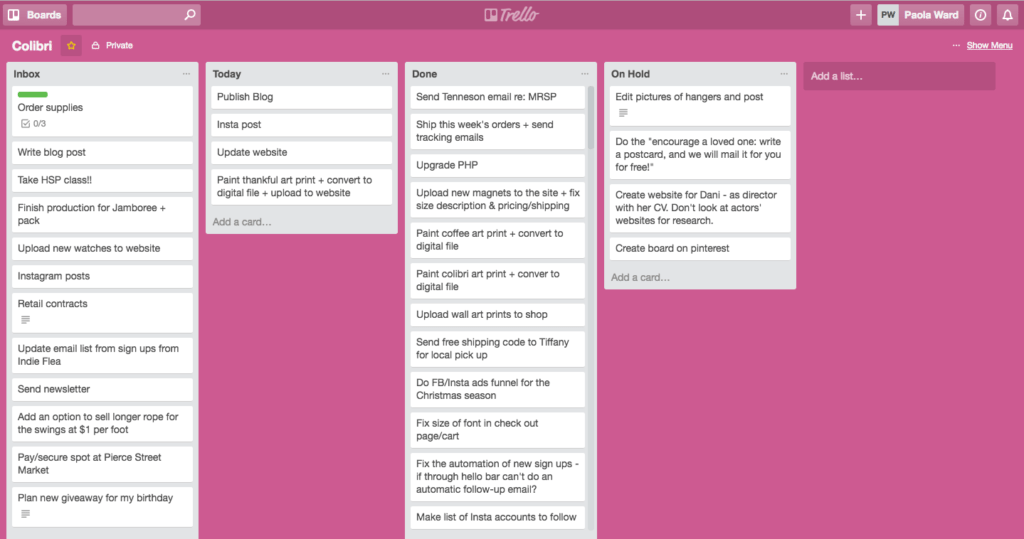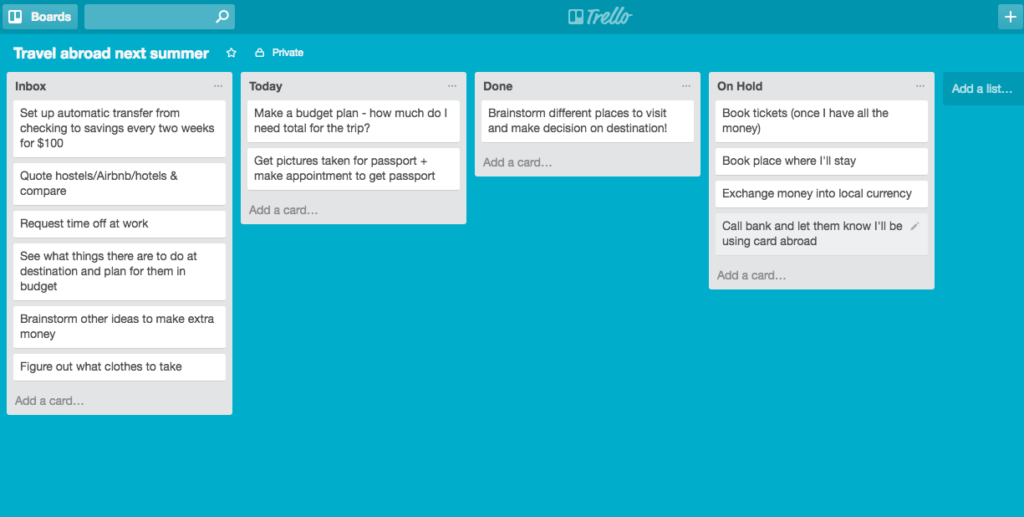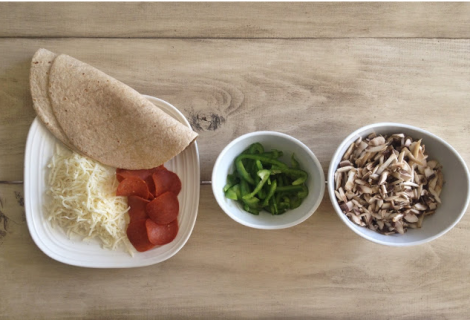3 Top Tools That’ll Help You Chase Your Dreams
This is part 1 of 3 in a series covering the top three tools that’ll help you chase your dreams (and just get things done).
If you were to look at dreams in a practical (and achievable) way, they are just projects. There is an end goal, brainstorming to figure out how to get there, and then all the stuff in between – the actions you must take in order to make that dream a reality. The sum of these actions can be overwhelming and can lead to analysis paralysis which just leaves you stuck on the thinking and planning part without executing.
During my time as a growth partner in a startup consulting company, I worked with about 6 different companies at the same time, and my job was to help them grow and come up with ways to overcome any obstacles they had in the process. This job description basically meant I would do process design, then marketing, write pitch emails, social media management, etc., etc., and all this left me with a gigantic amount of tasks that I would have to do every week. At first, it was overwhelming, but with practice, a lot of tweaking of systems, and the help of the following tools, it became the norm called project management, which I’ve discovered applies to a lot of things in life, especially big dreams!
Note: the tools I’ll cover are the ones I use right now. There are various of the same kind of tools and some may work better for your needs than the one that I’m covering, so I’ll add links to the other ones at the end of each blog. I also know what it’s like to be on a budget, so all the ones I’m writing about are freemium services, which means they are free to start using but some of the more advanced features you have to pay for to get access to. In my experience, though, the free version is pretty top notch and gives you what you need to get organized. So without further ado, let’s start with the first tool:
1. Trello
Trello, simply put, helps to organize your to-do list. You can use it both on your laptop as well as your phone and it always syncs automatically. There are a lot of features you can use, like color labels, deadline setting, recurring tasks, adding attachments to your cards, sharing with other people, etc. But the main thing is that with this, you can get all the stuff out of your head and into visual boards, lists, and cards. There are many ways you can use it and organize your to-do’s, and it’s all about trial and error and figuring out what works best for you. Personally, I like to keep as simple and straightforward as possible, so I just keep four lists on my boards: Inbox, Today, Done, and On Hold.
- Inbox: As soon as something pops in my head that I need to do I add here. This is based on a productivity practice by David Allen which he talks about in his book Getting Things Done. I call this step decluttering my mind, because it gives me peace since I’m not constantly worrying that I may be forgetting to do something.
- Today: I add here what I plan on doing that day, and it all comes from the list of things I’ve added to my inbox list. I try to keep it between 3-5 tasks only (unless some of them are really fast/little like “email x person to check on satisfaction of product received). Keeping it short ensures I focus on what’s most important.
- Done: Because when I used to handwritten to-do lists I loved crossing things off. So this the digital equivalent. I like going back and seeing the progress too, it’s like a little boost of confidence in seeing how much I’ve done for a certain goal 🙂
- On Hold: Sometimes things pop in my head that I add to my inbox that aren’t that important or the best use of my time this week, so this is where they go. They could be projects I want to pursue in the future after I meet a certain goal for what I’m doing now, or things I’m interested in but don’t have time for yet.
Here’s what my board for The Colibri Project looks like this week:

Back to you and how to chase your dreams.
If your dream is to travel abroad next summer, your board for it may look something like this:

The key is to use your board as a constant reference. For example, at the end of every day, I take 5 minutes to check what and plan the next day. Then at the end of the week, I plan the week ahead. This process is a good way to check on your goals and see how spending your time.
So start thinking of your dreams as projects you have to manage: break down the steps. But most importantly do something every day and chase your dreams! You’ll see that as your actions add up, you’ll be closer to that dream becoming a reality. In the words of Walt Disney “The way to get started is to quit talking and begin doing.” And make sure to come back next week for the second tool!
Similar tools
- OmniFocus. Note: Only works with Mac products
- Wunderlist




